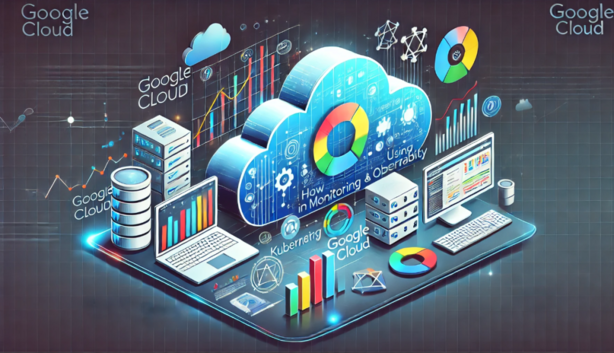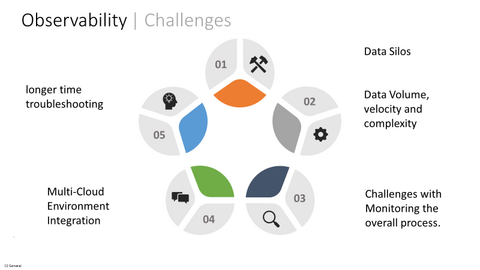Upgrade & Secure Your Future with DevOps, SRE, DevSecOps, MLOps!
We spend hours scrolling social media and waste money on things we forget, but won’t spend 30 minutes a day earning certifications that can change our lives.
Master in DevOps, SRE, DevSecOps & MLOps by DevOps School!
Learn from Guru Rajesh Kumar and double your salary in just one year.

In the rapidly evolving world of cloud computing, the need for efficiency, speed, and reliability has never been greater. To address these needs, many companies have embraced DevOps, a set of practices that combine development and operations teams to streamline the entire software delivery lifecycle. But while DevOps principles are critical to improving collaboration and accelerating development, they also demand effective tools for monitoring and observability to ensure the health and performance of applications at all stages.
Google Cloud, with its suite of powerful tools, has integrated DevOps practices with advanced monitoring and observability features to give organizations the capability to monitor, diagnose, and optimize their applications effectively. This allows companies to scale their services seamlessly, enhance performance, and ensure minimal downtime, all while maintaining a high level of collaboration between development and operations teams.
In this blog, we’ll explore how Google Cloud is using DevOps for monitoring and observability, and how it helps teams improve both operational efficiency and application reliability.
What is Monitoring and Observability?
Before diving into how Google Cloud leverages DevOps principles, it’s essential to define monitoring and observability:
- Monitoring refers to the continuous tracking of metrics and data generated by systems, applications, or infrastructure. This data helps teams identify the current health, performance, and uptime of services.
- Observability goes beyond monitoring by allowing organizations to infer the internal state of a system through the data it generates. It provides deeper insights that help detect and troubleshoot issues faster, making it easier to understand how the system is behaving even before issues arise.
Both monitoring and observability are crucial in DevOps, ensuring that teams can respond quickly to any issues and make data-driven decisions.

Google Cloud’s Approach to Monitoring and Observability
Google Cloud has built an extensive set of tools that combine DevOps practices with advanced monitoring and observability. These tools are designed to help developers and operators manage complex systems and maintain high service levels. Let’s break down the core tools offered by Google Cloud:
1. Google Cloud Monitoring
Google Cloud Monitoring offers real-time visibility into the health and performance of applications and infrastructure. It provides comprehensive insights into application metrics, uptime, and overall service performance.
- Custom Dashboards: Users can design tailored dashboards to monitor critical metrics and track service health, making it easier to visualize the data that matters most.
- Service Level Objectives (SLOs): Teams can define and track SLOs to ensure that they are meeting performance and reliability targets for applications and services.
- Alerting: Google Cloud Monitoring supports automated alerting, notifying users when metrics exceed predefined thresholds or anomalies are detected. This helps teams take proactive steps to resolve issues before they impact users.
2. Google Cloud Logging
Google Cloud Logging (formerly Stackdriver Logging) allows teams to store and analyze logs generated by applications, systems, and services. It’s an essential tool for DevOps teams because logs provide valuable insights into what’s happening within an application.
- Centralized Logging: All logs are collected and stored in one central location, making it easier to manage and search for specific logs from different services.
- Real-time Log Analysis: Teams can analyze logs in real-time to identify issues, troubleshoot errors, and optimize performance.
- Log-based Metrics: You can create custom metrics from logs, allowing you to monitor events and activities that are critical to your services.
3. Google Cloud Trace
Google Cloud Trace is a distributed tracing tool that helps teams analyze the latency of their applications. By tracing the flow of requests across different services, it helps pinpoint performance bottlenecks and identify areas for improvement.
- End-to-End Latency Analysis: Cloud Trace tracks the journey of requests across various microservices and provides insights into which components are slowing down the system.
- Optimizing User Experience: By identifying delays and inefficiencies in the system, teams can optimize the user experience, improving speed and performance.
4. Google Cloud Profiler
Google Cloud Profiler continuously analyzes the performance of production applications with minimal overhead. This helps teams identify performance issues and bottlenecks in real-time.
- Performance Profiling: Profiler helps teams track CPU usage, memory consumption, and other system resources.
- Optimization: By providing detailed insights into performance, Profiler makes it easier for teams to optimize their applications, reducing resource consumption and improving efficiency.
5. Google Cloud Error Reporting
Error Reporting is a tool that automatically collects and aggregates errors from applications, providing insights into potential issues. This helps DevOps teams stay on top of any failures or bugs within their applications.
- Centralized Error Tracking: All errors are collected in one place, making it easier to identify trends and patterns in application failures.
- Automatic Grouping: Google Cloud groups similar errors together, helping teams prioritize which issues need to be addressed first.
How Google Cloud Integrates DevOps with Monitoring and Observability
Google Cloud’s monitoring and observability tools are designed to integrate seamlessly into DevOps workflows, enabling teams to automate processes, collaborate more effectively, and improve system reliability.
1. Automated Data Collection
In a DevOps environment, automated data collection is crucial. Google Cloud’s monitoring and observability tools automatically capture telemetry from applications, infrastructure, and third-party services. This reduces manual setup, speeds up deployment times, and allows DevOps teams to focus on more strategic tasks.
2. Unified Interface for Monitoring and Logging
Google Cloud provides a unified interface that consolidates monitoring, logging, and tracing tools into a single platform. This means that development and operations teams can collaborate in real-time using the same interface to track and diagnose issues.
- Shared Data: With all logs and metrics in one place, both developers and operators can view and work on the same data, making communication between teams more effective.
- Faster Issue Resolution: By providing a holistic view of the system’s health and performance, Google Cloud’s tools make it easier for teams to detect and resolve issues quickly.
3. Custom Dashboards and Alerts
Google Cloud Monitoring allows teams to create custom dashboards and set up automated alerts, making it easier to stay on top of system health and performance. Alerts are triggered when predefined thresholds are exceeded, ensuring that teams can respond immediately to any anomalies or potential issues.
4. Continuous Integration and Delivery (CI/CD)
Google Cloud’s observability tools play a vital role in supporting CI/CD practices, a core aspect of DevOps. By integrating monitoring into the continuous integration pipeline, teams can continuously test, monitor, and deploy applications without compromising performance or reliability.
- Performance Metrics: Continuous monitoring of performance during the CI/CD pipeline helps detect issues early, ensuring that only reliable code is pushed to production.
- Faster Releases: By using observability tools to track the health of services, teams can accelerate release cycles and ensure that updates are stable and performant.
Benefits of Google Cloud’s Monitoring and Observability in DevOps

Integrating Google Cloud’s monitoring and observability tools into DevOps workflows offers several key benefits:
1. Enhanced Collaboration Between Teams
By providing shared insights and a unified interface, Google Cloud fosters collaboration between development and operations teams. This results in faster issue resolution, streamlined communication, and more efficient workflows.
2. Proactive Issue Detection and Resolution
With real-time monitoring, logging, and tracing, Google Cloud allows teams to detect issues early, long before they impact users. Proactive issue resolution minimizes downtime and enhances user satisfaction.
3. Continuous Improvement Through Data-Driven Insights
Google Cloud’s observability tools provide continuous feedback through data and metrics, enabling teams to improve their applications iteratively. This allows for continuous improvement, a key principle in DevOps.
4. Increased Operational Efficiency
With automated data collection, centralized logs, and customizable dashboards, DevOps teams can operate more efficiently, focusing on key metrics and optimizing performance across their systems.